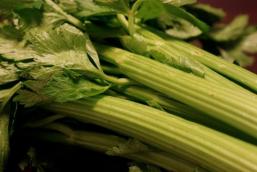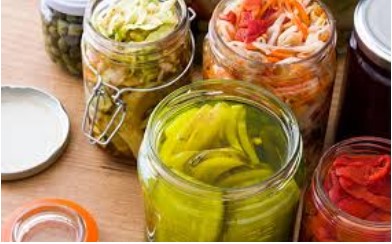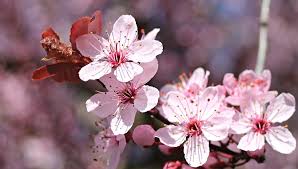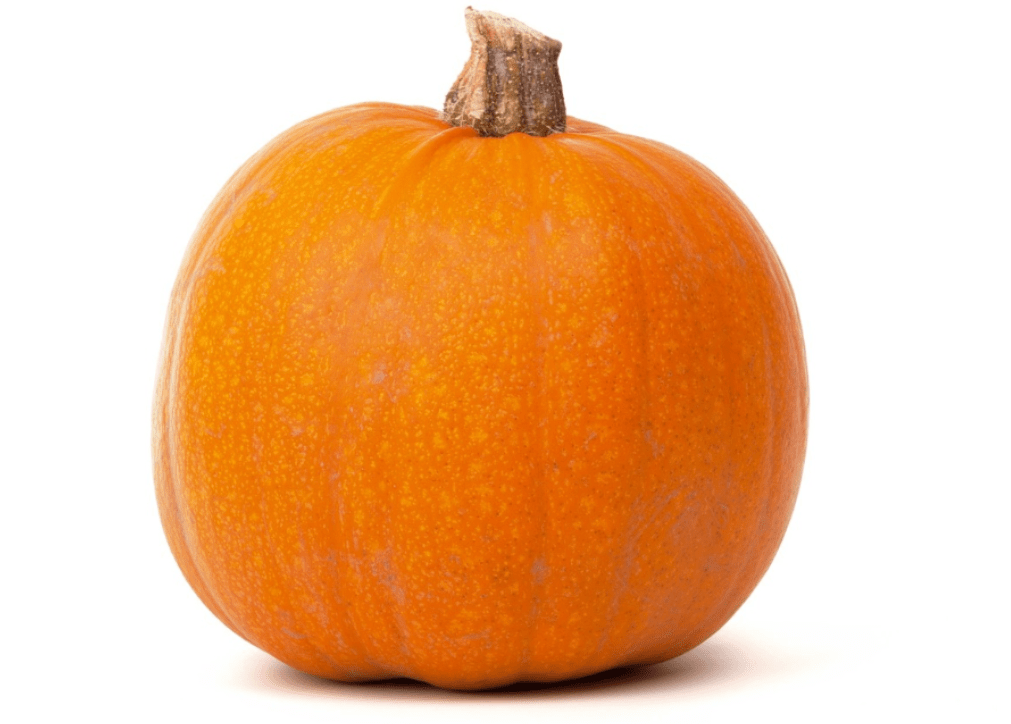This week, of all the organic vegetables and fruits in the garden, the least damaged by the storm, besides the cabbage family, is our organic celery J
Thanks for your understanding regarding what is missing. The most damaged were the leafy vegetables – lettuce, green onion and chives, Swiss chard, napolitus, nasturtium leaves and flowers … all of the garden residents are either torn or have white spots from the blows of the hail.
The organic cucumbers got a serious frostbite and there is a shortage everywhere, at all growers. Cucumbers are members of the summer pumpkin family and the intense cold made the fruits (the cucumbers) turn yellow L
But that is nature… that’s how it is. They will all be replenished or replaced by other crops J
This week, please welcome the one that survived the storm very well. Celery – strong, brave, tough and really really healthy!!!
Organic celery, A to Z:
A. Apium Graveolens is the celery's botanical name, derived from Greek. Until today, the name Apium refers to a kind of marinade of celery very common in Greece and the Balkans.
B – Bi-annual is this plant, although, we grow it as if it were seasonal because it is harvested as a whole or with its root.
C – Customary Greek spiced wine had celery seeds in it.
D – Duke Mirepoix, the "sacred trinity" for the French and an essential commodity in the family's chicken soup. Must include celery!
This is how the history has it: Our hero is a French Duke who served as general and ambassador in the 16th-century in Paris. His name was CHARLES PIERRE GASTON, DUKE DE LEVIS-MIREPOIX. The Mirepoix couple lived a middle class life and one day were invited by King Louis V (himself) to his court. What excitement! New dresses and shoes for the wife, new colorful wigs for the Duke!
Mirepoix:
King Louis the 15th:
Mrs. Mirepoix immediately caught the King's eye, who was a known womanizer …. and he gave clear orders. The duke shall return to his home while the wife was invited for an extended visit. Since there is no appeal against the orders of the King, our hero returned home, feeling betrayed and sad, though he was accompanied by gifts of money and lands from the king.
Like the saying says: "The way to a man's heart is through his stomach". Poor Duke Mirepoix consoled himself with food and gave clear instructions to his personal cook of what he wanted to eat. He asked for each course, in every meal, to have a sauce made of finely chopped vegetables consisting of celery, carrots and onions. This unique trinity of vegetables has raised the Duke Mirepoix into the history books.
Here is a recipe from the magazine Paprika:
¼ cup olive oil
50 g butter
300 g white onion, diced small
150 g carrots, diced small
150 g celery, diced small
1 cup beef or chicken broth
½ cup dry white wine
Recommended but not required to add cubes of smoked goose breast
In a thick-bottomed pan, heat the oil and butter, add the onion. Later add the carrots and celery and the diced smoked goose breast. Continue frying until the onion becomes transparent. Add the soup broth, lower the heat and cook until the fluids are reduced to about half. Toward the end of cooking, add the white wine. Continue to gently simmer for another 4 minutes.
This is the basis for dishes, sauces and more, or as an addition to meat or fish.
E -Egyptians and the Greek, in the ancient era, were the first to cultivate the celery. Celery enjoys water and grows wild in swamps, on the sides of streams and near springs.
F – Fame and celery: It's told that in 1960 in Chicago, a celebrity walked into the bar at the Ambassador East Hotel and ordered a Bloody Mary. Apparently his drink arrived without a stirrer (a mixing stick). Rather than waiting for service, our Celeb simply took a celery stalk and used it. Since then all respectable Bar-Tending books agree this is the correct way to serve the bloody Mary.
G – Garlands of celery decorated the heads of Greek champion athletes. I dedicated one to my sister on her birthday. Greeks also decorated graves with celery. I've already written you about this story and it's here if you want to read it again.
H – Homer is the first to mention the celery in his famous Odyssey from the 8th century BC
I – In the ancient era, the Egyptians and the Greeks were the first to cultivate the celery. It was initially used as a medicinal herb and only later as an edible plant.
J – Jews use celery as "Karpas". In Passover it is required to dip "Karpas" but it is completely unclear if our ancestors meant precisely celery, or maybe lettuce ….?
K – Karpas is the name in Hebrew.
L – Lose calories?? They say that chewing celery burns more calories than it actually contains. It really has almost no calories at all!
M – mashed potatoes innovated: make with half potatoes and half celery, the rest as usual as you like.
N – The name celery was given by the Greeks, which means water celery. In contrast to petroselinon (parsley), which in Greek means rock-celery. Peter = rock Slinon = celery
O – Old Chinese medicine considers the celery as a blood pressure reducer.
P – 0.7 gr of protein, and 1.7 gr of dietary fiber in a hundred grams or about one cup of celery.
Q – Quote from a site for chefs: "Mirepoix – a mixture of aromatic root vegetables (onion, carrot, leek, celery), coarsely chopped are used to enrich broths, sauces, soups and stews." – relates to D above.
R – Rambam recommended to treat urinary problems with celery. Celery seeds have been used to treat pain for thousands of years. Folk medicine used it to clean the digestive system, stop bleeding, calm and strengthen. Now it is considered a diuretic plant and helps reduce blood pressure and cholesterol.
S – Seeds of celery, in the garden, require a great deal of patience because sprouting is very slow. Another tip for garden owners among you, do not sow it near the parsley since their sprouts and leaves look very similar, as well as their Greek name.
T – The celery root, like other roots, tends to turn blackish when peeled and comes into contact with air. A dribble of lemon, or soaking it in a bowl of water with lemon, will prevent this from happening.
U – Umbelliferae – the latin name for the celery's family. It resembles the words Umbrella and Flora. In Hebrew the family is named like a shelter (סוכך) because its flowers are arranged in small umbrellas or awnings. In English they're called Apiaceae. The celery flower has 5 small sepals, 5 petals and 5 stamens. This family includes more than 3000 species among which the most toxic is Hemlock Kingfisher (aka Mother Die in English). Large doses disables the respiratory system. It is told that in ancient Greece they used celery to poison criminals for executions. This is the way Socrates was terminated.
V – vitamin A is abundant in celery as well as calcium, iron, potassium, and some vitamin C.
W – a walk next to a spring, even here around Nataf, can reveal to you organic celery of the wild species that grows here.
X – Xtract (extract) from celery seeds yields a valuable volatile oil used in the perfume and pharmaceutical industries. They also contain an organic compound called apiol which is used for the treatment of menstrual disorders. It is an irritant and in high doses it is toxic and can cause liver and kidney damage.
Y – Yeah!! Celery contains the male hormone Androsterone, naturally. This hormone is a kind of pheromone. Pheromones (from Greek, pheromone – Frain (to transfer) + hormone (trigger / stimulate) are molecules secreted by animal in order to convey messages between individuals of the same species. Androsterone is secreted in a male's sweat and is considered to be sexually arousing to women. (Quote from Wikipedia).
Z – Zealous celery eaters are guinea pigs, horses, birds, squirrels and small rodents. (Wikipedia)
Z – Zohary, Daniel and Hopf, Maria note that celery leaves and flowers were part of the garlands found in the tomb of pharaoh Tutankhamun (died 1323 BC), and celery mericarps dated to the 7th century BC were recovered in the Heraion of Samos. However, they note "since A. Graveolens grows wild in these areas it is hard to decide whether these remains represent wild or cultivated forms." Only by classical times is it certain that celery was cultivated. (wikipedi)
Have a healthy, strong, fun and good week
Yours,
Maggie and the garden staff
And in our weekly baskets i expect (draft only) :
Trinity :
Celery
Onion
And carrots 🙂
Cabbage
Sweet Potatoes
Avocado
Lettuce
Coriander
Tomatoes
Peppers
Larger ones also:
Leeks
Beets
Pakchoi
And parsley
Fruit baskets :
Kiwis
Oranges
Grapefruit and Sweeties
Larger ones also:
Clementines
And bananas

















